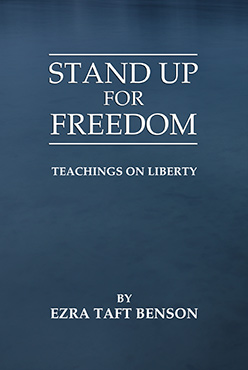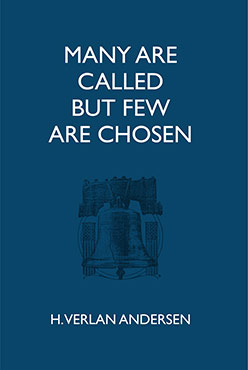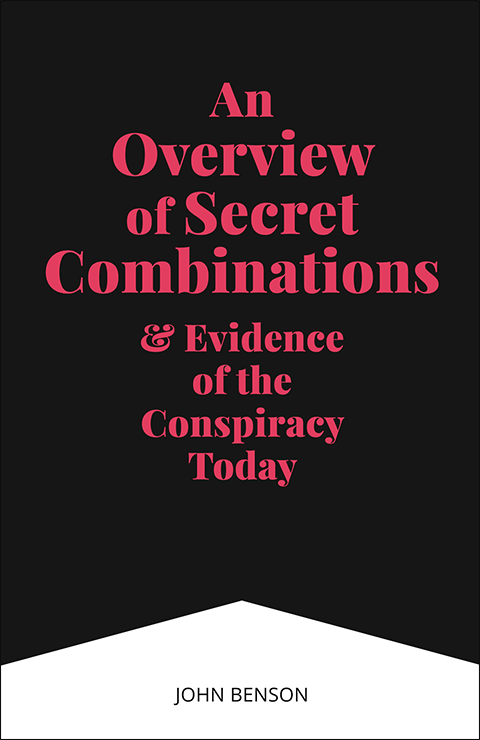An Heuristic Exploration of “the Union.”
Heuristic: A form of education where the student is trained to find out things for himself.
William Rawle (1759-1836) studied law at Middle Temple, London in 1781, and returned to Philadelphia to open the Rawle Law Offices on September 15, 1783. He quickly took his place among Philadelphia’s legal elite, managing a successful law practice and participating in the formation of the new republic. Rawle’s reputation as a lawyer vaulted him into the position of delegate to the Pennsylvania Constitutional Assembly of 1789. His public service continued when he accepted President Washington’s request to become the first U. S. Attorney for the District of Pennsylvania.
As U. S. Attorney, Rawle was instrumental in suppressing the Whiskey Rebellion in Western Pennsylvania and prosecuting the leaders of the insurrection. In 1792, Washington offered Rawle the position of federal judge for the new Pennsylvania district. When Rawle declined that post, Washington offered the position of U. S. Attorney General, which Rawle also declined, choosing instead to maintain his thriving private law practice. Rawle became the first chancellor of the newly-founded Philadelphia Bar Association in 1822, and remained in that position until his death. Rawle was a member of the American Philosophical Society, a trustee of the University of Pennsylvania, president of the local anti-slavery society, and founder and president of the Pennsylvania Historical Society.
Rawle authored A View of the Constitution of the United States of America, first edition 1825, second edition 1829 (and is still being reprinted in 2007). His book was adopted as a constitutional law textbook at West Point and other institutions and covers the subject in 344 pages.
Abraham Lincoln (1809-1865) was elected to the Illinois State legislature as a Whig and served for three terms from 1834 to 1842. In 1837 he began to practice law in Springfield. Lincoln became a prominent railroad attorney and a political insider in Northern big business circles. As a wealthy trial lawyer he married into an affluent slave-owning Kentucky family, the Todds. Today Lincoln would be called a “lobbyist” for the railroad industry. As a member of the Whig Party he was an ardent protectionist who spent his entire political career promoting protectionist tariffs.
Today he would be considered an “inflationist” who favored letting a federal bank print paper money that was not necessarily redeemable in gold or silver. Both his Whig and Republican parties used tariffs and paper money to subsidize corporations engaged in what they called “internal improvement” projects. Lincoln was elected to Congress as a Whig in 1846 and served one term. “Father Abraham,” as some historians have called him, was elected as a sectional president representing only the Northern industrial and money powers. In a three-way split with no electoral votes coming from the South and only receiving about 40 % of the popular vote, Lincoln won the election of 1860. Upon being sworn-in as President he assumed dictatorial power by-passing Congress and amputating parts of the Constitution, which he had just sworn to uphold. The noble cause for which he claimed these usurpations were necessary was to “save the Union.”
Thousands of books and papers have been written about Abraham Lincoln. The Political Thought of Abraham Lincoln was edited by Professor Richard N. Current in 1967 to offer a good cross section of Lincoln’s actual speeches and writings contained in 340 pages.
This brings us to the question: What is this “Union” that our authors of liberty established between 1620 and 1787?
After all, if we are going to participate in saving something, then we ought to know just exactly what it is that we are saving. Especially this is true if we are instructed that those persons who desire to withdraw from the Union are the enemy and then we are given further instructions to begin killing the people and destroying the property of the separatists until they are completely crushed or decide not to separate and the glorious declaration can be made: We “saved the Union!”
To “save the Union” the commander-in-chief of the million-man army of the North authorized the killing of eventually 300,000 “rebellious” southerners including about 50,000 civilians, plus the total destruction of about 40% of the southern economy. This coercion of the “rebels” into compliance with northern will cost the North about 320,000 dead soldiers. These numbers do not include the untold suffering and destruction of hundreds of thousands of others injured. There is also no mention here about the burden on the taxpayers. Furthermore under the noble banner of “saving the Union” the newly elected CEO launched a 75,000 man invasion of South Carolina without the consent of Congress; illegally suspended the writ of habeas corpus and imprisoned tens of thousands of Northern political opponents; shut down some three hundred northern opposition newspapers; censored all telegraph communication; imprisoned a large percentage of the duly elected legislature of Maryland as well as the mayor of Baltimore; illegally orchestrated the secession of West Virginia; deported the most outspoken member of the Democratic opposition, Congressman Clement L. Vallandigham of Ohio; systematically disarmed the border states in violation of the Second Amendment; and effectively declared himself dictator. All of this death and destruction and usurpation of power was based upon the definition of “the Union” provided by Lincoln in his first inaugural address and repeated in his message to a special session of Congress on July 4, 1861. Let us place the question squarely before us and then begin a heuristic exploration.
Is Abraham Lincoln’s definition of the “Union” the same as the meaning it held when used by our authors of liberty in the United States Constitution? (If Lincoln’s definition is wrong, then the War was totally unnecessary and was a horrendous violation of the rights of the people of the Southern States. There is a lot that hinges on a correct understanding of the definition of the American union of the founding fathers. Did Lincoln’s War “save the Union?”)
Caution!
In reading history beware of two things:
-
The smooth talk of prominent men
-
False educational ideas
Assignment:
- Read President Abraham Lincoln’s definition of “the Union” in his First Inaugural Address and in his message to Congress on July 4, 1861. These are primary sources and should be considered possibly more accurate than commentaries about Lincoln’s definition as filtered through the eyes of a historian. (Total of about 20 pages of reading) Primary source: and http://teachingamericanhistory.org/library/index.asp?document=1063
- Compare Lawyer Lincoln’s definition with Lawyer Rawle’s definition by reading chapter XXXII, “Of the Permanence of the Union,” in the constitutional law text book, A View of the Constitution, 1825 or 1829 edition. (Primary Source, eye witness account,15 pages) Note: This book is one of the first constitutional law text books written after the formation of the Union of 1787. This is one of the most valuable books to have in discovering the intent of the framers and what the Constitution truly means. See William Rawle’s biography. Was he qualified for this task? Primary source: http://www.constitution.org/wr/rawle_32.htm and http://www.constitution.org/wr/rawle-00.htm
- Read the Declaration of Independence. (Primary Source) In the correctly type-set sub title, note the lower case “u” in the line “The unanimous Declaration of the thirteen united States of America.” In 1776 not one Union, but thirteen separate states were created out of the formerly thirteen English Colonies. They were united (lower case “u”) to separate from England. The last paragraph announced to the world that the colonists were seceding from the British Empire as citizens of free and independent states, not as “the whole people.” The Declaration of Independence was a Declaration of Secession from the British Empire. Did the founders create a “new nation” or a confederacy of “free and independent states?” Primary source: http://upload.wikimedia.org/wikipedia/commons/0/07/Us_declaration_independence.jpg and http://www.law.indiana.edu/uslawdocs/declaration.html
- Read Article I of the Second Treaty of Paris of 1783 that ended the American Revolutionary War. (Primary Source) Observe that when the Revolution ended, the king of England did not sign a peace treaty with something call “The United States” as a singular proper noun, but rather it was between the king and the “said United States,” plural. Why do you suppose the “free, sovereign and independent States” are named individually? Primary source: http://www.ourdocuments.gov/doc.php?doc=6&page=transcript
- Read Article I, Section II of the Articles of Confederation. (Primary Source) Observe that when the citizens of the states created a federal constitution in the form of the Articles of Confederation, they made a point of clearly spelling out their independent and sovereign status. As defined in Article I, Section II: “Each State retains its sovereignty, freedom and independence, and every power jurisdiction and right, which is not by this confederation expressly delegated to the United States, in Congress assembled.” What did each state retain when they voluntarily agreed to accept this plan? When was the “perpetual union,” established by the Articles of Confederation, terminated? (Hint: US Constitution Article VII) Primary source: http://www.usconstitution.net/articles.html
- Read The Federalist Papers #39 by James Madison. (Primary Source) Observe how the Constitution was to be ratified by the people “not as individuals composing one entire nation, but as composing the distinct and independent States to which they respectively belong… Each State, in ratifying the Constitution, is considered as a sovereign body independent of all others, and only to be bound by its own voluntary act… [The Constitution’s] jurisdiction extends to certain enumerated objects only, and leaves to the several States a residuary and inviolable sovereignty over all other objects.” Primary source: http://federalistpapers.com/federalist39.html
- Do a word search in James Madison’s writings, Notes of Debates in the Federal Convention of 1787. Examine the context in which words like “voluntary,” “compact,” and “sovereignty” are used. Try and determine from this primary source if the United States were in a voluntary compact and with the exception of a few specific enumerated powers, retained full sovereignty over all objects not enumerated in the Constitution. For example, Governor Morris declared that “…as the Compact was to be voluntary, it is in vain for the Eastern States to insist on what the Southern States will never agree to.” Primary source: http://www.yale.edu/lawweb/avalon/debates/debcont.htm
- Read Article Ten of the Bill of Rights (Primary Source) What State rights were to be absolutely retained by the States and by the people? http://usinfo.state.gov/usa/infousa/facts/funddocs/billeng.htm
Lawyer Lincoln’s and lawyer Rawle’s definitions of “the Union” are in complete contradiction to each other. They cannot both be right! After you have completed the above homework, you are better prepared to offer an informed opinion. Suppose you are on a jury and you have listened to each prominent lawyer present his case. Whose definition comes closest to the truth? Did Lincoln’s War “save the Union?” Please submit a very brief written response.
Note: All primary sources listed above are readily available on the web.
Respectfully submitted, Stephen Pratt




